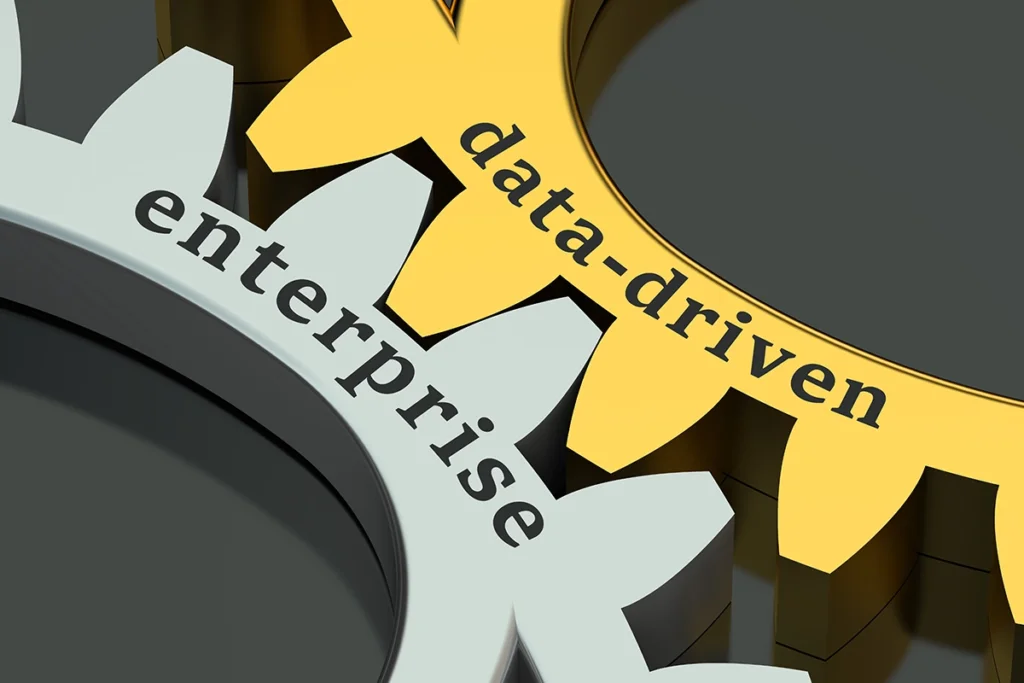Cambridge Dictionary defines the adjective “data-driven” as meaning “happening or done according to information that has been collected.” But there are at least six distinct dimensions to this modifier, reflecting the importance of using information effectively.
And while the term “data-driven” has become widespread across various industries and applications, its precise meaning can vary greatly depending on the context. At Dataclay, we believe our suite of products – Templater, QUE, and Projector – embody all facets of its meaning, enabling users to create dynamic, personalized video content efficiently and at scale. Let’s delve into six key ways the term is used, and see how Dataclay fits in each one, focusing on the effective use of information.
Table of Contents
1. Data-Driven Decision Making
In business, making decisions based on empirical evidence rather than gut feelings or tradition is essential. Dataclay’s tools help organizations leverage information to create videos that enhance customer connections.
For example, a marketing team can use Templater to generate multiple versions of a video based on A/B test data, allowing them to determine which version performs best. This is very different from manually creating many versions of the same video and helps save time while also making decisions based on quantitative information. This process can be enhanced by incorporating customer metrics into video content creation.
2. Processes in Software and Engineering
This refers to software that uses data structures and databases to define behavior, instead of relying on static code. Dataclay’s Templater is designed to pull information from external data sources, like spreadsheets, JSON files, or databases, to automatically populate dynamic layers within an After Effects project.
This means that the video content itself is informed by the data in those sources, eliminating the need to manually change each element of a video each time it needs to be updated. This aligns with modern software architecture where configurations can be modified without needing to recompile the code. Templater uses data to drive its behavior, automatically adjusting elements based on the input provided, and Projector works with data sources as well to streamline video distribution.
3. Marketing
In marketing, being focused on user insights means tailoring campaigns using user data like demographics, browsing history, and purchase patterns. Templater allows for the creation of personalized video content at scale by connecting to a variety of data sources. A company can create a series of videos with customized text, images, or even embedded footage based on user data, delivering personalized messages to different segments of their audience. This resonates with the idea of delivering highly relevant content at the right time.
4. Approaches in AI and Machine Learning
AI and machine learning use data to generate insights with minimal hand-crafted rules. While Dataclay products aren’t directly AI, they enable similar results by automating the connection between information and video creation workflows.
For instance, Templater can process large amounts of information that is used to make personalized videos. The quality of the video is still heavily dependent on the quality of the data, similar to how AI models are dependent on the quality of the information they are trained on. Additionally, this process can be augmented with AI tools, like ChatGPT, which can make writing custom expressions and scripts more accessible.
5. Policy and Research
This involves using large-scale studies and statistics to inform policy and strategies. While Dataclay’s focus is on video creation, its technology can create videos that communicate research insights. For example, a city planning department could use Templater to automatically create explainer videos of demographic and traffic patterns.
Additionally, Projector helps deliver information to marketing teams after the video has been posted to streaming services. In this way, Dataclay’s tools can facilitate more efficient information dissemination for policy and research initiatives.
6. Corporate Culture
A culture that values and uses information at all levels of an organization is crucial. Dataclay’s products promote this by making it possible for anyone, from marketing interns to seasoned video producers, to produce videos that are tailored to their specific audience.
Templater allows a team to create customizable video templates which can be populated with relevant information. QUE facilitates flexible data management through its JSON based platform, enabling collaborative workflows, and Projector helps automate the rendering and distribution of those videos. By using these tools, companies can make information accessible and actionable across departments, supporting a culture that values data.
Key Takeaway
In conclusion, Dataclay’s suite of products fully embodies being data-driven. From enabling informed decision-making to driving complex software processes, from marketing to organizational culture, Dataclay tools empower users to transform raw information into compelling video content. By grounding processes and decisions in information, Dataclay helps turn insights into actionable strategies.
